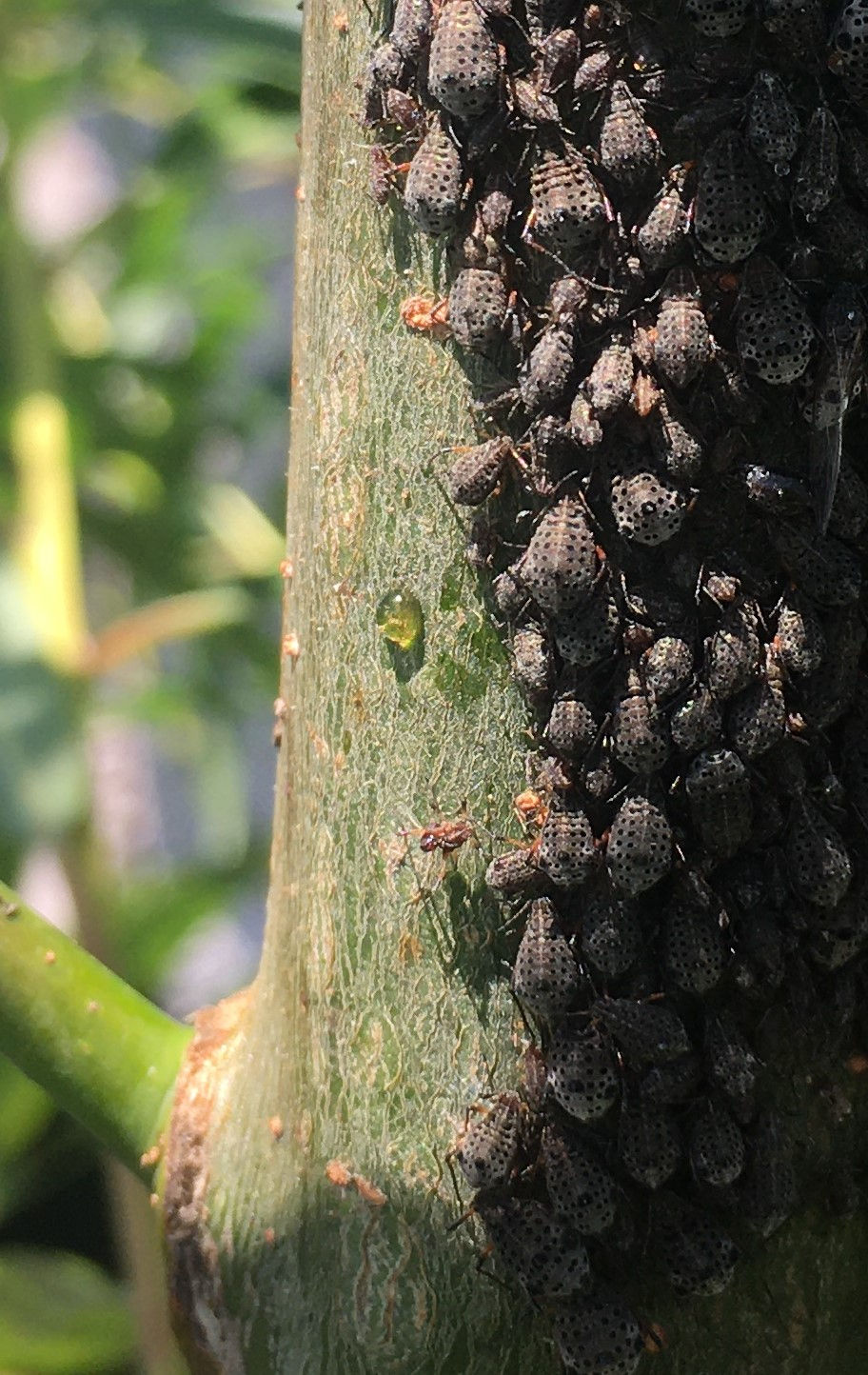Working with Willows, Part III - Giant willow aphid
- Trees for Bees Trust

- Oct 3, 2021
- 3 min read
By Stephanie Sopow (Scion), Dr Trevor Jones (NZ Poplar and Willow Trust), Drs Linda Newstrom-Lloyd and Angus McPherson (Trees for Bees NZ)

The giant willow aphid (GWA) is a serious pest of willows, which has had a noticeable impact since its arrival in 2013, with blackened willow trees in the landscape, stem dieback, tree deaths and a surge in vespid wasp populations. The aphids form large clusters on tree stems (Fig. 1) and produce copious amounts of honeydew during summer and autumn, that attracts wasps and bees, and leaves sticky deposits on roads and farm gates under willow trees.
The honeydew collected by bees, contains the trisaccharide sugar melezitose, which crystallizes in the honeycomb, as well as salicylic acid and malic acid that contribute a sour taste to the honey. During honey extraction and processing the melezitose crystals rapidly clog filters and result in reduced yields. The sugars present in the honeydew of willows comprises 50 to 70% melezitose, so careful management of beehives is required to avoid contamination of floral honeys.
Impact on willow health

Willows vary widely in their susceptibility to the aphid, with the more susceptible species hosting large populations of the aphid. These build up quickly with the warmth of summer, and peak in autumn, before declining with colder weather in winter. The aphids deplete the willows of nutrients, particularly in the autumn, when the trees need to store starch reserves to survive the winter and commence growth and flowering in the spring.
Willows that have proved susceptible, include Salix candida, S. dasyclados, S. hookeriana, S. pentandra, S. viminalis and S. udensis, where tree deaths, stem dieback and reductions in spring flowering have occurred. Other willows have proved more tolerant, such as S. aegyptiaca, S. alba, S. appenina, S. caprea, S. eriocephala, S. lasiolepis × viminalis, S. matsudana, S. matsudana × alba, S. nigra, S. purpurea, S. reinii, S. schwerinii and S. x reichardtii, but, for some of these, reductions in tree biomass growth of 20 to 50% have been observed when aphids are present.
Biocontrol of the aphid

As with many exotic insects that invade new areas and become serious pests, giant willow aphid arrived in New Zealand without any of the natural enemies that help to keep it in check elsewhere. Giant willow aphid is scarce in California where it is parasitised by a tiny wasp called Pauesia nigrovaria, which relies on the aphid to complete its development, killing the aphid and creating an aphid mummy in the process (Fig. 2). Aided by MPI's Sustainable Food and Fibre Futures initiative, the tiny wasp was brought into New Zealand for testing in containment in 2017 and was released in 2020 after confirming that it posed negligible risk to any other species.
Further releases of P. nigrovaria were conducted in summer and autumn of 2021, targeting remaining gaps and aiming to achieve good coverage of New Zealand (Fig. 3). Simultaneously, surveys were being conducted in the central North Island to determine overwintering success and the distance it had spread from 2020 release sites. Survey results were astounding, with the wasp found up to 100 km from release sites one year later and in very high numbers, making them relatively easy to find.
At this early stage in the biological control programme, we are unable to predict the level of impact the wasp will have in controlling GWA populations. However, the survey results indicate that effective control is possible, and that it could happen faster than anticipated. Look for evidence in the form of aphid mummies which remain fixed to willow stems for several months, to determine whether this process is underway in your area.
Planting Advice
When considering which willows to plant for your spring bee forage, there are a number of cultivars that provide significant pollen while showing a degree of resistance to GWA. These include the tree willows white willow (S. alba) and black willow (S. nigra), which grow to a considerable size, along with some shrub and basket willows such as the pussy willows S. caprea, S. aegyptiaca and S. purpurea.

As always, refer to the selected best male willow genotypes that produce the most pollen per plant (Apiarist’s Advocate August 2021, pg 21-24) and in the online publication ‘Winning with Willows’ at www.treesforbeesnz.org/how-to-plant-guides. Cross reference this with tolerance to GWA. Willows are so valuable for spring build-up of bee populations that it is most worthwhile to plant them and try to control the willow aphid if it becomes a problem.





Comments